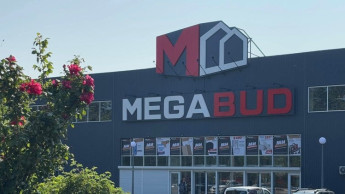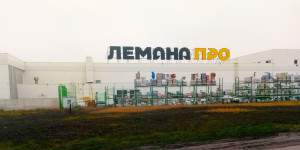
deep insights, facts & figures
31.01.2013
How does brand management function beyond national boundaries? The detailed version of a discussion with Achim Franck, director international marketing and development consumer at Tesa
Companies operating on an international scale export not only their products but especially their brands. This means their brand management is confronted with new challenges: foreign languages, other cultural codes and different consumer habits can become barriers to expansion abroad. How strong is the Tesa brand in Germany and abroad? Achim Franck: Tesa is a brand that is represented in the DIY stores of nearly every country in Europe; it plays a leading role in Europe in terms of brands. The degree of classic brand awareness is more or less strongly developed by reason of Tesa’s history in the different countries. Brand awareness can be said to vary between 20 and 80 per cent in the target group in most of these countries. In Germany the Tesa brand is firmly anchored in the consumer’s mind as the byword for quality in adhesive tapes and enjoys around 98 per cent brand recognition. So the marketing boss still has quite some work to do in certain countries. That’s right. In eastern Europe, for example, it happens that we are often not so present in consumers’ minds – even if, at the same time, we are the market leader in the local DIY retail scene. Of course that is down to history: as a brand and as a company we have only a comparatively short tradition in the east European countries. We have been on the market there for no more than 15 or 20 years: that is, from the point in time when the DIY chains discovered eastern Europe.And it is also because, when it is a question of instruments such as TV advertising, we pursue a very traditional brand build-up in the media that is carefully targeted by cost-benefit ratio and only in very selective markets.Here certain fundamental conditions must be present in the market: there must be a target group with enough purchasing power, as well as a sufficient availability of the products in the marketplace. Since DIY stores are not yet widely established as a channel of distribution in many east European countries, the amount of coverage wasted through TV advertising or suchlike would be disproportionately great.That’s why we are taking a more intelligent approach. We are proceeding through group-specific PR and, very intensely now, via online activities. However, we do rely very strongly on the POS. What does that mean in concrete terms? It is not only a question of having good packaging and a nice shelf display. Naturally the best ambassador for a brand is always a powerful product.But, apart from the product, the entire design of both range and POS offer is the key driver of brand perception. We make use of the whole POS layout to lead the shopper along so that he can find the right product for his purpose. Brand awareness is promoted by a clear POS guidance system in combination with all necessary information and the way the brand design is organised.But orchestration of the brand and the product at the POS also assist our trading partners in gaining satisfied customers and additional purchasing impulses. We have proved that POS design can exercise a considerable influence on sales. Our newest POS concept for the category of bathroom hooks provides evidence of how, on the one hand, a brand can be orchestrated at the POS and, on the other, perceptible increases in sales can be achieved. And the brand approach functions similarly in all countries? Yes, though you sometimes have to adapt the style of your approach. For instance, if you want to sell Tesa-Moll in Russia, the fact that it is energy-saving won’t interest anyone, since Russian consumers hardly pay any heating costs because they are subsidized. However, it is of primary importance in many other countries. In southern Europe, though, it is more a question of providing protection against dust, and in some other countries simply protection against the cold.Quality expectations, too, are sometimes different. That is why our offer includes different versions of some products for the various markets, and why we can also respond to the varying levels of price acceptance of local users. Is the brand image identical in all countries? On principle the Tesa brand appears in the same way throughout Europe. Usually we work with international leitmotifs and for the past year have had a new uniform brand design for our communication purposes. In special cases, though, we take local peculiarities into consideration. Occasionally we also work with testimonials and there, too, attention must of course be paid to the national awareness or relevance of the person concerned. Who undertakes this adaptation of style that you have mentioned? We work with agencies on the central side, and sometimes locally as well. But the know-how of our own people on the spot is necessary in order to find out what people do and where. The input of our marketing and distribution colleagues from these countries is important to us. In addition we do market research in individual countries when we need to have a better understanding of the consumers there. How important in international communication is the fact that Tesa is a German brand? It is our strategy to apply this not in general but in a very targeted way, because we wish to take into account the various regional sensitivities. In Russia, for example, we make use of a “No. 1 brand in Germany” icon with the German flag. German quality is much appreciated in Russia. But this approach can’t be taken in certain other countries like France, for example. Tesa products are marketed through various distribution channels. In which countries is the DIY channel of distribution most important for Tesa? The DIY channel is the strongest one for us in nearly all the markets where we are actively involved. Our market figures show that we are Europe’s leading brand in the category of “self-adhesive tapes in DIY stores”.
Related articles
Read also

 Menü
Menü















